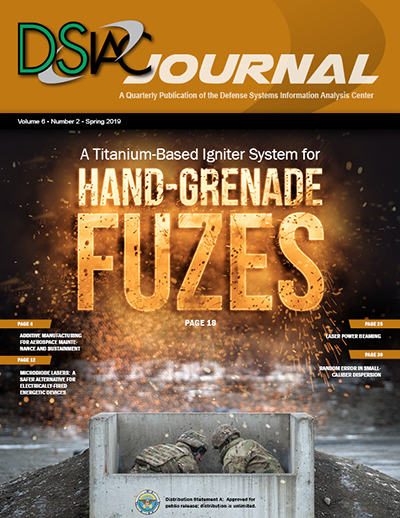The DSIAC Journal is designed to complement the mission of the DoD Information Analysis Center (IAC) in eliminating redundancy, fostering collaboration, and stimulating innovation within the DoD research and associated science and technology (S&T) ecosystem. It facilitates information sharing and promotes a greater awareness of relevant DoD S&T developments.
The journal features findings and summaries of recent S&T research projects/programs highlighting related advancements or emerging trends. Ideally, readers who were, or are, planning to engage in comparable research efforts will be able to leverage published journal information to benefit their research efforts to streamline the realization of solutions to Warfighter challenges. Redundant research efforts can be avoided if researchers, scientists, and engineers share their work through publication platforms like the journal. To be sure, it is a lofty goal to eliminate redundancy, but that is the aim of the DoD IAC. Lack of awareness or an ill-informed DoD research community should not be the reason to repeat work.
How does the journal foster collaboration? Ideally, defense scientists are not conducting duplicative research efforts but efforts that complement one another instead. As with the goal of combating redundancy, the key is information sharing that facilitates awareness (e.g., by publishing in the DSIAC Journal). The more that researchers across all domains and military branches know, the greater the opportunity for collaboration.
An example was recently evidenced through a collaborative connection that we were able to make on account of the DSIAC Journal. Our Summer 2018 issue featured an article by Dr. Christopher Seedyk, a computer engineer with the U.S. Army Research Laboratory, on “Characterizing Cyber Intelligence as an All-Source Intelligence Product.” A few months after publishing this issue, we received a message from a technical advisor (who conducts corresponding research) with the Air Force Life Cycle Management Center seeking further information from Dr. Seedyk. We were able to facilitate an introduction to each researcher across military branches, thus fostering collaboration through this journal publication.
The DSIAC Journal can stimulate innovation by simply sharing novel research findings or highlighting emerging S&T that informs and inspires other scientists/engineers.
Finally, the DSIAC Journal can stimulate innovation by simply sharing novel research findings or highlighting emerging S&T that informs and inspires other scientists/engineers. Specifically, because the journal publishes articles on topics across multiple disciplines, reading a variety of topics presents opportunity for innovation. For example, this issue features an article on “Laser Power Beaming,” which may be an enabling technology for certain types of autonomous systems discussed in past journal issues. Although these are distinct articles from different focus areas (directed energy and autonomous systems, respectively), there may be an innovative and collaborative opportunity between the two topics, such as integrating a laser power-beaming system into an autonomous system. In any case, the more one reads about scientific and technological topics as presented in this journal, the more one’s imagination will be cultivated.
I trust that you find the articles in this Spring 2019 issue interesting and applicable to your work efforts. Perhaps you will discover that an effort you intended to conduct has relevant historical and/or ongoing research. Perhaps you will learn about research efforts that might complement with your own efforts, and you can find ways to collaborate. Even if a given article may not apply to your work, I hope that you will read and share it so that you and others throughout the greater DoD S&T ecosystem stay informed and encouraged to advance research toward the associated realization of solutions for Warfighter capability requirements.


